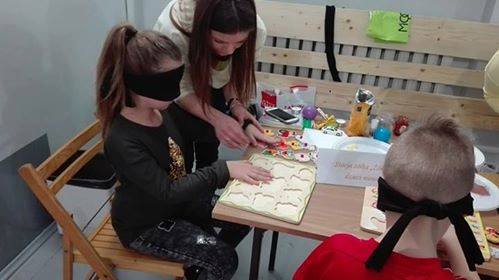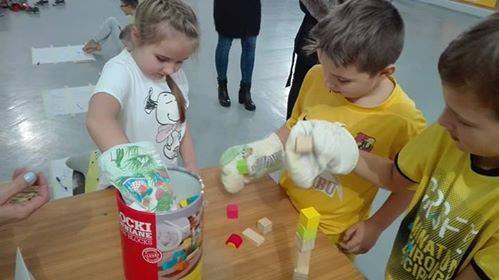The International Day of Disabled People is celebrated around the world on December 3 every year. The holiday was established by the General Assembly of the United Nations in 1992 at the end of the Decade of Disabled Persons.
The purpose of the celebrations was to familiarize the school community with the problems of people with visual, auditory and motor impairment, as well as to increase the awareness of our students about the disability. As in the previous year, support teachers carried out the action "3 December or yellow". That day the school was dominated by a yellow color. In this way, we have solidarized with people with disabilities.
As part of school celebrations, sensory workshops for children from grades 1-3 were prepared. During the classes, students experienced how to get to know and perceive the world of a person with motor, visual and auditory disabilities. Children with blindfolds recognized the flavors and smells of products demonstrated by teachers and arranged wooden jigsaw puzzles. These struggles brought students closer to the specificity of the functioning of the blind. The next tasks our children were facing were exercises, consisting in recognizing sounds and writing dictations, of course, with stoppers in their ears. In this way, students learned about the difficulties that deaf people face. The last exercises that pupils from grades 1-3 were facing were slalom between the bollards without the use of legs, drawing geometric figures with the help of feet, and stacking the tower from blocks, with kitchen gloves on their hands. Participation in these activities made the children aware of the problems encountered by people with mobility disabilities in their lives. At the end of the meeting, students participated in a sign language lesson. The youngest got to know the dactylography, that is, the finger alphabet and the gestures defining the polite phrases.
Older students watched a multimedia presentation that included information about the types of disability and the aspirations of people with disabilities. They learned that the most important desire is the need for equal treatment, which translates into access to communication, information and space. They were also acquainted with the savoir-vivre guide for people with disabilities. They analyzed the scenes presented in the presentation, pointed out positive and inappropriate behaviors, as well as familiarized themselves with the basic rules in contact with people with dysfunction.
Pupils' profiles of famous people affected by disability were presented, including Janka Mela, Monika Kuszyńska, Natalia Partyka, Karol Bielecki.



